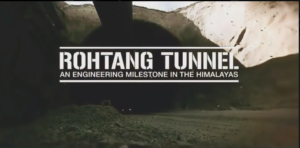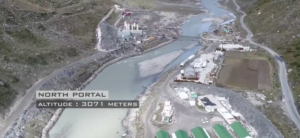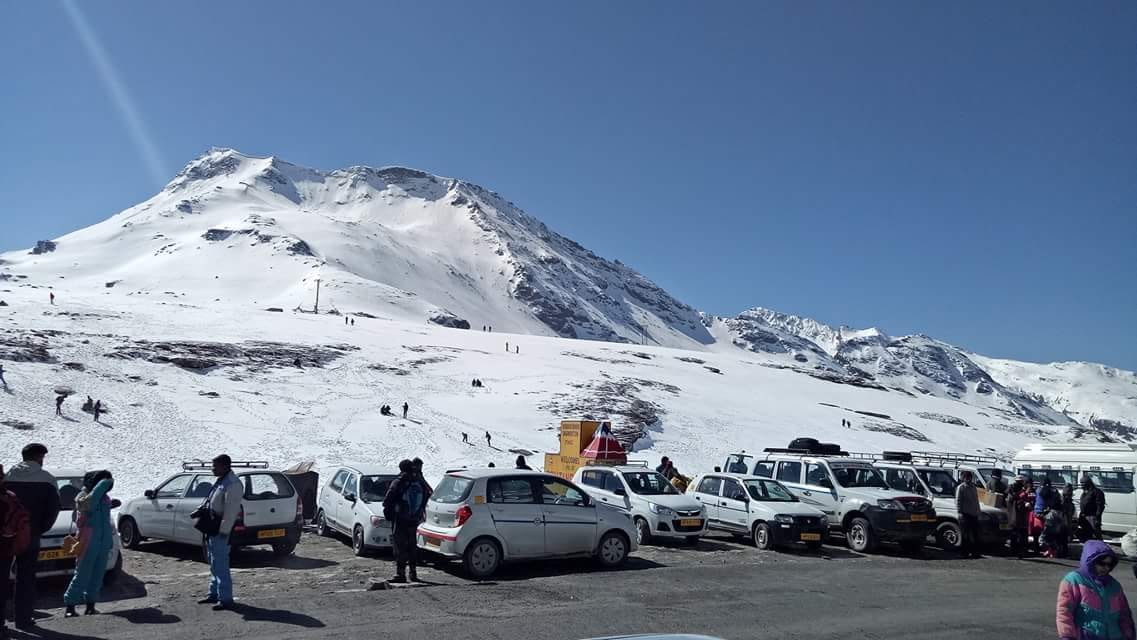
Rohtang Tunnel | Highest Motorable Road Tunnel In The World
Rohtang Pass Tunnel is the new Tunnel being built under Rohtang Pass on the Leh Manali Highway. Rohtang Tunnel length is 8.8 km long. This tunnel will be one of the longest tunnels in India (Though the longest tunnel is 9.2
km long – Chennai and Nashri Tunnel. Also the Patnitop and Udhampur tunnel).
This Rohtang Pass Tunnel will reduce the distance between Manali and Keylong by 55 km (approx). This tunnel is at height of 3100 meters whereas Rohtang Pass altitude of 3,999 meters.
Reason Behind making Rohtang Tunnel
The Manali to Leh Highway, is one of the two routes which goes to Leh Ladakh will be going through Rohtang Tunnel soon. Rohtang Pass receives too much snowfall during winter that roads get blocks for six to seven months in a year. After the opening of this tunnel, the highway will get open during winter as well.
The other route to Leh Ladakh is through Ziji La Pass via Srinagar Kargil Highway which also gets blocked in winter due to snow for many months in a year. Construction of a long tunnel via Ziji La Pass has also been planned and will start soon. Both the routes are important to provide Military supplies in the sector of Siachen glacier.
The Starting / Cutting of the Tunnel had been completed in Oct 2017 and the blasting from south and north ends joined and tunnel may open soon.
Specifications of Rohtang Tunnel
The tunnel is going to create an all-time route to Leh and Lahaul and Spiti valleys in Himachal Pradesh.
- Length of Tunnel: 8.8 kms
- Shape (cross-section) of Tunnel: Horseshoe
- Designated vehicular speed: 80 km/h (50 mph)
- Finished width: 10.00 m (32.8 ft) at road level. (8m pavement and 1m footpath on both sides)
General altitude of the tunnel: 3,000–3,100 m or 9,840–10,170 ft - Geology of tunneling media: Uniformly dipping alternate sequence of quartzites, quartzitic schists, quartz-diorite-schist with thin bands.
- Tunnel boring machines will not be used because of the inability to see inside the mountain, instead blasting and digging will be used to build the tunnel.
- Temperature variation in the area: 25–30 °C (77–86 °F) during May–June, -30 to -20 °C (-22 to -4 °F) during Dec–Jan.
- Overburden: Maximum 1,900 metres (6,230 ft), average more than 600 m (1,970 ft)
Construction technique proposed: Drill & Blast with NATM - Rohtang Tunnel Opening date will be in somewhere around 2020
Support system proposed: Fibre-reinforced concrete (100–300mm or 0–10 inch thick) combined with rock bolt (26.50mm dia, 5,000–9,000mm or 200–350 inches long) has been proposed as the
principal support system. In areas of poor rock condition, yieldable steel ribs (ISMB 150/ISMB 300) have been proposed in addition.
Tunnel ventilation: a Semi-transverse system of ventilation has been proposed.
A 2.25 m high and 3.6 m wide emergency tunnel will be integrated in the tunnel cross-section beneath the main carriageway.
The following parameters have been set in design:
(a) Upper tolerance limit for concentration – 150ppm
(b) Visibility factor – 0.009/m
(c) Vehicles
(i) Cars – 3000 Nos.
(ii Trucks – 1500 Nos.
(d) Peak hour traffic – 337.50 PCUs
(e) Design vehicular speed in Tunnel
(i) Maximum Speed – 80 km/h (50 mph)
(ii) Minimum Speed – 30 km/h (19 mph)
Project Cost : Approximately Rs.(INR)40 billion (Euro 250 million)
Rohtang Tunnel Location in Manali
Rohtang tunnel is not exactly under Rohtang pass; it is slightly west of the pass towards the Solang Valley. The tunnel is reached by turning left at Palchan, 10 km north of Manali on the way to
Rohtang pass or about 40 km before Rohtang pass near Solang Valley. After crossing Solang village, Dhundi is reached after 10 km. The south end of the tunnel is just north of Dhundi across the Beas River.
When completed, the 8.8 km (5.5 mi) long tunnel is also set to become the world longest tunnel at an altitude above 3,000 m or 10,000 ft. The nearest in comparison to the Rohtang Tunnel
would be the Anzob Tunnel in Tajikistan (length 5 km, altitude 3,372 meters (11,063 ft)), Khojak Rail tunnel near Quetta in Pakistan (length 3.9 km, altitude 3,912m), Salang Tunnel in the
Hindu Kush mountains in Afghanistan (length 2.6 km, altitude 3,400m) and the Eisenhower–Johnson Memorial Tunnel in the United States (length 2.73 km (1.7 mi), altitude 3,401 m (11,158 ft)).
There were proposals of installing a Neutrino detector in the tunnel by Panjab University and Tata Institute of Fundamental Research
The 85 km distance from Manali to Keylong on the other side of Rohtang Pass is usually covered by vehicles in about five to six hours, without counting the long hours of traffic jams on the hilly
route. The same distance would now be covered in less than half-an-hour. Keylong would be just 25 km from the North Portal of the tunnel.
The state government has proposed that the tunnel be renamed after Shri Atal Bihari Vajpayee after the death of the former Indian Prime Minister in August 2018.
Afcons in a joint venture with Strabag AG, is constructing the world’s longest road tunnel. It is 3000m above sea level for the Border Roads Organisation (BRO) in Manali, Himachal Pradesh. The Rohtang Pass Highway tunnel is a single tube bilane tunnel that will 10.5m in width and will have a maximum vehicle speed of 80km/hr. On the completion of the tunnel will cut down travel time between Manali and Lahaul by five hours. It will reduce the distance by 46 km.
Rohtang Tunnel – The Longest Tunnel Road to Leh
Rohtang Tunnel proposed to built cutting through the Great Himalayas under the Rohtang Pass in the Leh-Manali Highway. The 8.8 km Rohtang tunnel will be the longest tunnel road in India and World’s highest Road Tunnel. It will reduce 46 km distance between Leh and Manali. Rohtang pass is the highest mountain pass on the on the eastern Pir Panjal range in the middle of Himalayas and Tunnel become a reality for India and will be the biggest achievement for India.
Rohtang Tunnel Images







